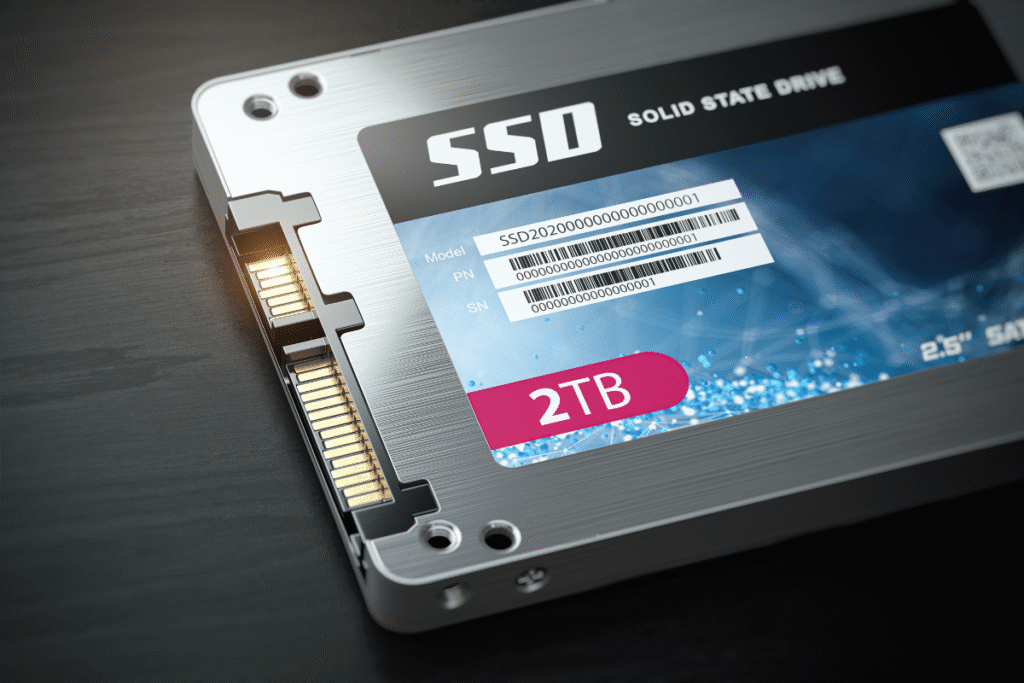Let’s be honest—our digital lives are exploding. Photos, music, work files, game installs, backup copies of backup copies… You get it. If your laptop or desktop still uses an old hard drive, you’re watching your productivity drag through mud.
Enter SSD Memory Storage. It’s not just a buzzword—it’s the upgrade you wish you did yesterday. Sleek, speedy, and capable of expanding your device’s capacity across laptops, desktops, and even consoles, in a snap.
What Exactly Is SSD Memory Storage?
Think of it like this: an SSD Memory Storage acts like the rapid engine in your car. It stores information digitally the use of flash memory chips, not like old-fashioned spinning disks that bodily study and write.
That means:
- Lightning-fast boot-up times
- Nearly zero noise
- Less chance of failure from dropping your device
- Files open instantly, and edits are saved fast.
In short, SSD Memory Storage makes devices feel new again.
Real-Life Upgrade: My Morning Routine (Faster Than Ever)
Okay, anecdote time. I had an older pc that took a stable minute (or more) to turn on and open documents. One day in the middle of a busy morning, I installed a 1TB SSD. Next thing I knew, I was moving between apps so fast I nearly missed my coffee.
Now it turns on in seconds. I can switch between Adobe Lightroom, Chrome tabs, and a PowerPoint in a jiff. All because I upgraded to SSD Memory Storage that feels like magic—and costs less than a fancy dinner.
SSD Disk vs HDD: The Real Comparison
Let’s compare an SSD disk with an older hard drive:
| Feature | HDD (Traditional Drive) | SSD Memory Storage |
| Boot-up time | 1–2 minutes | 5–10 seconds |
| Speed (file access) | Slow, clunky | Instant |
| Battery usage | Moderate | Low |
| Durability | Sensitive to shock | Portable and tougher |
| Price Per GB | Low | Slightly higher (but worth it) |
The speed difference alone is human vs. snail pace. And honestly, once you go SSD, you don’t go back. Not unless you enjoy watching spinning buffering wheels.
Understanding SSD Data Storage Time and Capacity
Two things matter most: how long it stores data reliably, and how much it can hold.
Modern SSDs promise SSD data storage time measured in years—even without power. Some claim 10-year retention; realistically, you’ll replace long before that happens, but it’s still solid.
And SSD data storage capacity has exploded. You can find drives from 250GB to 8TB for desktop slots. Most of us grab 1TB or 2TB—enough for movies, photos, games—without breaking a sweat.
Capacity isn’t just for storage—it directly impacts speed. The fuller the drive, the slower it gets. So it pays to leave some breathing room.
Buying Smart: Affordable SSD Storage Online
You don’t need to blow your budget. Affordable SSD storage online options abound. Wait for income (Black Friday, returning to high school, and many others), take a look at discount codes, and evaluate authentic manufacturers.
If you’re looking for the SSD Memory Storage sweet spot, focus on:
- 500GB to 2TB range
- NVMe (faster) over SATA if your device supports it
- At least a 3-year warranty
- Known brands with reliability reviews
That little upgrade can make your old computer feel like it’s finally living in the 21st century. Worth every penny.
Practical Steps to Upgrade Across Devices
So you’ve ordered your SSD Memory Storage. What’s next?
- Backup your files (just in case).
- Clone your existing drive, or do a fresh OS install.
- Install the SSD (internal M.2 or SATA, or external via USB enclosure).
- Turn it on—watch that boot speed shock you.
- Keep your old drive as backup (optional).
That entire process takes under an hour, but yields weeks of faster productivity. So worth it.
Personal Quirk: Why I Keep Two SSDs
Here’s a weird confession. I always keep two SSDs: one for my main work OS and apps, and another just for media storage (photos, music, videos). Sound overboard?
Maybe. But it’s fast as hell. I can transfer files between drives in seconds versus minutes on my old HDD. And frankly, it feels like having superpowers every time.
That’s the kind of difference SSD Memory Storage brings—speed that becomes habit.
Final Tips if You’re Upgrading
- Check if your device supports NVMe M.2 or SATA.
- Don’t fill the SSD past 80%—leave headroom to keep it fast.t
- Update firmware occasionally for better stability.ty
- Use TRIM optimization on Windows/Mac for maintenance.
- For external setups, pick out USB 3.1 Gen 2 or Thunderbolt for pace.
Conclusion
If your computer feels slowed down, apps laggy, gaming uneven, or file get right of entry to maddening—SSD Memory Storage is your fastest shortcut to modern performance. And when it comes to expanding capacity reliably across devices, SSDs shine.
From increasing desktop speed to making your laptop startup feel instantaneous, this upgrade is an investment in your digital life—not just your devices. You don’t just get faster storage. You get peace of mind, a smoother workflow, and a tech revel in that doesn’t cause frustration.
When you choose a dependable device partner, whether or not it’s laptops or capsules, and pair it with stable SSD Memory Storage improvements, you’re constructing a setup that lasts. And if you’re considering hardware from pinnacle-tier producers that deliver each overall performance and reliability? Samsung is absolutely at the forefront.
So upgrade wisely. Expand smartly. And enjoy your digital life with a whole lot more speed.
For more blogs like this stay tuned with 2MinuteRead

